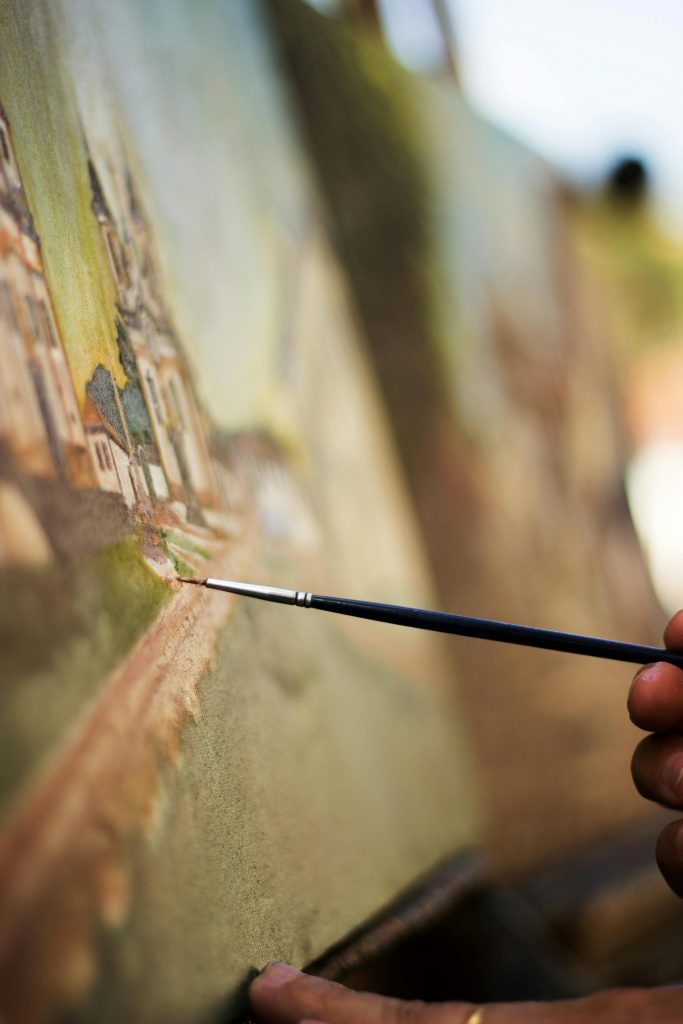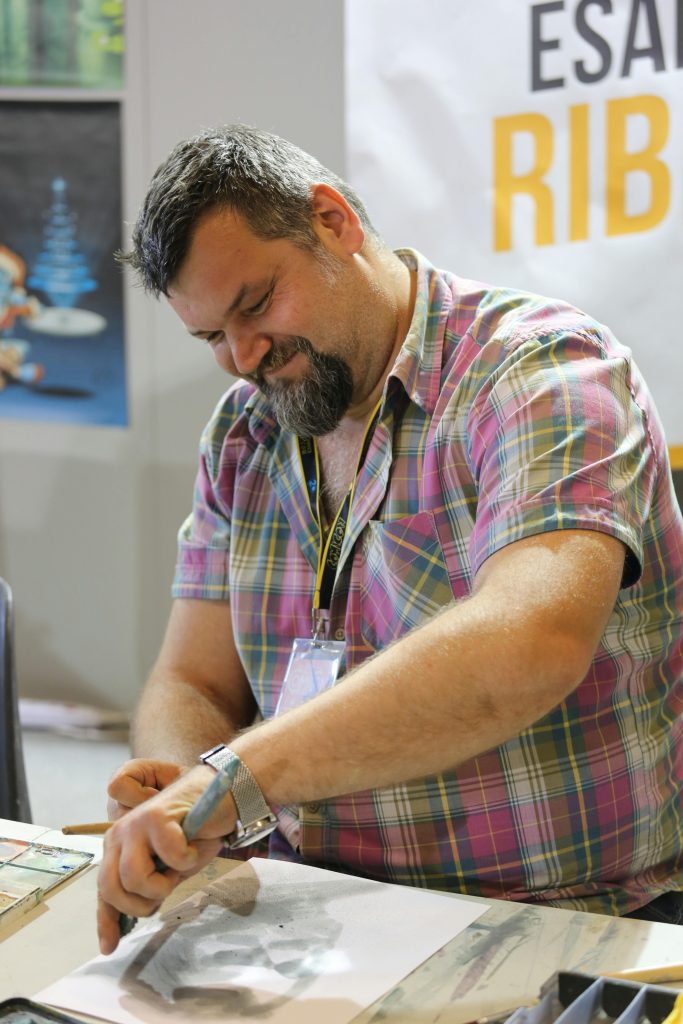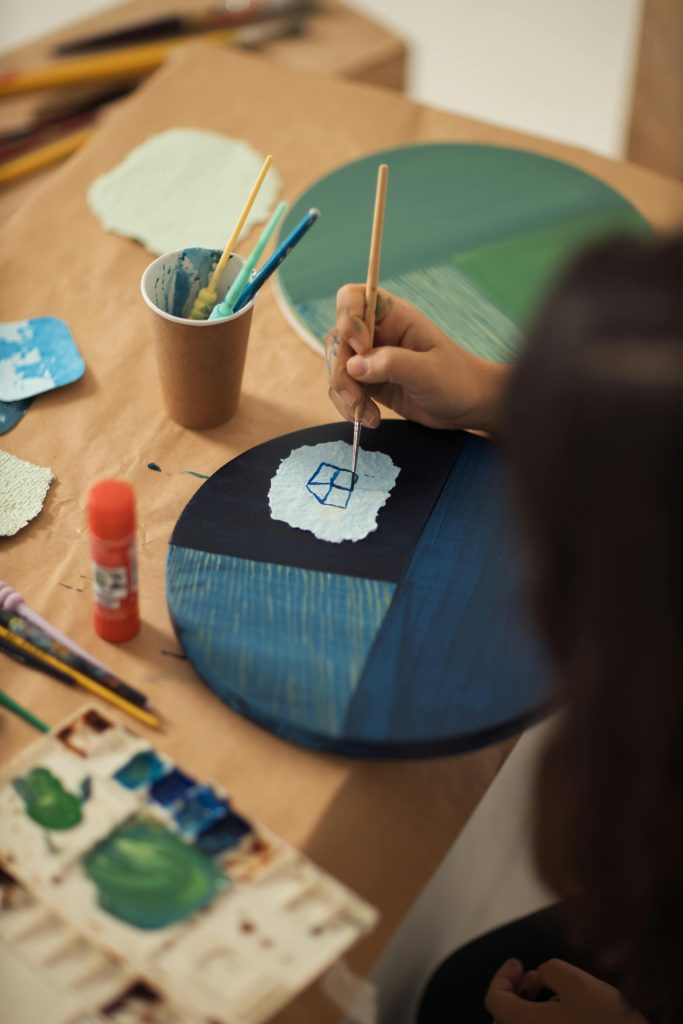How to Make Your Portfolio Interactive and Engaging

1. Why Static Isn’t Enough Anymore
There was a time when an online portfolio was a digital gallery, clean, clickable, and often as static as a printed brochure. But today, with more artists vying for attention and collectors, curators, and collaborators browsing from phones and tablets, that passive layout just doesn’t cut it. Interactive portfolios give your audience something to do, not just something to look at. And when people interact, they remember.
It’s not about flashy tech but building experiences. Think of it like stepping into a well-designed studio versus staring through a window. A viewer who clicks, zooms, scrolls, hovers, or reacts is more likely to engage with your story and your work. That connection builds trust, and trust builds opportunities.
Interactive features also show that you’re paying attention to how your audience feels online. If navigating your portfolio is intuitive and satisfying, it reflects back on you as a thoughtful, professional, and forward-thinking artist.
Even better, many of these features don’t require coding or expensive platforms. From embedded videos to hover effects, most can be built with simple tools like Canva, Adobe Portfolio, or Wix. They’re creative platforms where you get to be both artist and storyteller.
So if your current portfolio isn’t very interactive, now’s the time to update it. Here’s how;
2. Add Hover Effects to Tell Micro-Stories
Hover effects are the simplest, most low-effort way to add interactivity to your portfolio, and they can be surprisingly powerful. When someone hovers over an image and it shifts, reveals text, or zooms slightly, it invites curiosity. It also offers an opportunity to tell a “micro-story” without cluttering the main view.
For example, imagine an artwork thumbnail that reveals your medium, title, or thought process when hovered over. Or a close-up detail replacing the main image temporarily. These small movements can spark interest without overwhelming the viewer with too much information upfront.
You can use hover effects to build emotional layering too. A dark painting might reveal a quote that inspired it. A textile piece might show the fabric swatch used. Each interaction becomes an entry point into your world. And when done consistently across your portfolio, it reinforces your identity as an artist who is thoughtful, intentional, and story-driven.
Platforms like Wix, Webflow, and even Canva Pro now offer these effects with just a few clicks. No coding needed
So instead of letting your viewer breeze past images, use subtle motion and revelation as a tool, to make them stop and really see your art.
3. Use Embedded Video to Deepen the Experience
Sometimes, your work needs to move. Especially if you work in performance, installation, multimedia, or process-driven forms. That’s where embedded video becomes your best friend. And no, it doesn’t have to be polished like a short film. Even a behind-the-scenes process video filmed on your phone adds layers.
Embedding videos lets your audience feel the work. A time-lapse of your stitching, a short walkthrough of your solo show, a minute-long voiceover about a piece. Viewers get to connect not just with the work, but with you.
It also breaks the scroll fatigue. A well-placed video interrupts the rhythm of static images in the best way. Suddenly, your page becomes dynamic. Viewers pause. They listen. .
You can upload videos to Vimeo or YouTube and embed the links directly into most portfolio platforms. For a cleaner look, choose autoplay-off and remove suggested videos at the end. This keeps the focus on your content, not the algorithm’s.
And don’t overdo it, 1 or 2 videos per section is enough.

4. Build an Interactive Timeline of Your Journey
Most artist bios are paragraphs. But what if yours were a map? Creating an interactive timeline lets you show your growth, your exhibitions, and your milestones in a way that feels both playful and professional. Think of it as a storybook instead of a CV.
There are timeline plugins and features in tools like Adobe Portfolio, Squarespace, and Notion that let you drag and drop events into a clean, visual layout. You could highlight moments like your first group show, an artist residency, or the launch of a new series. Some platforms even let users click on each point to expand and see more.
An interactive timeline isn’t just a flex, it’s context. It helps visitors understand the arc of your work. They see progression, commitment, exploration. And for collectors or jurors, that matters. It signals that you’re not just dabbling, you’re developing.
You can customize it visually, too. Use your own color palette. Add thumbnails of the artwork from each time period.
This kind of storytelling makes your journey feel real.
5. Add Click-to-Reveal Artist Notes
Sometimes, you want your audience to experience the work first, then read the story behind it. That’s where click-to-reveal notes come in handy. They’re like digital sticky notes hiding behind your artwork, waiting for curious minds.
These can take the form of expandable sections under each piece, toggled captions, or even simple “Learn More” buttons. The point is: the viewer chooses when they want more context. And that makes the experience feel more personal.
You could include things like: your inspiration, a quick anecdote, process images, or a short reflection. By giving viewers a choice, you’re showing respect for their experience. Some want to analyze. Some want to intuit. This way, both types of visitors feel seen.
This feature works beautifully in platforms like Squarespace or Cargo, which let you embed collapsible content. And it’s also handy for keeping your page visually clean while still rich in substance.
It’s like having a conversation where someone says, “Tell me more about this one.” And you respond, thoughtfully.
6. Invite Viewers to Participate
What if your portfolio wasn’t just a gallery, but a two-way street? Adding small interactive forms or polls can be a gentle way to invite participation. For instance, you could include a quick question like: “Which piece speaks to you the most?” or “Which direction should I explore next?”
It doesn’t have to be deep market research. It can be playful, simple, and unexpected.
You can also add reaction buttons under works (like emojis or short words: “intrigued,” “powerful,” “calm”). These data points can help you understand how different works are being received. Over time, you’ll start noticing what resonates.
This kind of interactivity turns your site from a passive scroll into a space of engagement. It also builds community. People remember how you made them feel, and being asked for their opinion, even briefly, leaves a mark.
Tools like Tally.so or Typeform are easy to embed and beautifully designed. So you can make participation feel like part of the art.
7. Include Interactive Maps for Location-Based Projects
If your work has geographical significance, like site-specific installations, murals, or residencies, an interactive map can give powerful context. Imagine clicking on a city and seeing what piece was created there, or hovering over a pin to watch a quick video or image pop up.
This works especially well for artists whose practice spans multiple locations. Instead of just listing places in your bio, you’re showing your footprint visually. It’s a great way to emphasize reach, versatility, or cultural exchange.
Google Maps embeds can work for a basic version, but tools like Mapme or Maphub offer more interactive design freedom. You can brand the pins, add multimedia content, and tell a story through geography.
It’s especially useful when you’re applying for international shows or trying to attract curators who want to see how your work travels. It shows how your art has connected with different environments.

8. Experiment with Scroll-Activated Transitions
Scroll-activated features add a cinematic feel to your portfolio. As viewers scroll, images can fade in, text can appear, or background colors can shift. These subtle animations make your site feel curated, not just uploaded.
When done thoughtfully, these effects create rhythm. They guide the viewer’s eye, pace their journey, and keep them engaged. Imagine telling a visual story that unfolds frame by frame as someone scrolls, just like turning pages in a book.
Platforms like Webflow and Framer allow scroll interactions with drag-and-drop simplicity. And they don’t need to be dramatic. Even a soft zoom-in or staggered image reveal can elevate your layout.
The key is restraint. You want to guide, not distract.
If your art is layered or narrative-driven, this is a great way to mirror that structure in how your portfolio flows.
9. Embed Social Media Previews
Rather than just linking out to your Instagram k, embed a live feed directly into your portfolio. It shows that you’re active, approachable, and growing. It also keeps your portfolio dynamic, always updating without extra effort.
Most portfolio platforms allow embedded widgets for Instagram or Twitter. You can place them in a sidebar or as a section break between galleries.
This kind of interactivity bridges the gap between your polished portfolio and your in-progress ideas.
It also builds credibility. Seeing others engage with your content, through likes, shares, comments, offers social proof that your work resonates.
Don’t underestimate the value of letting people see you beyond the polished portfolio shots. Sometimes the mess, the behind-the-scenes, or the daily sketch is what makes someone fall in love with your practice.
10. Feature a Dynamic Waitlist or Collector Interest Form
If you sell original work or limited editions, adding a collector interest form or waitlist sign-up is a powerful interactive feature. It lets visitors take action without needing to buy immediately. It also builds anticipation, and your mailing list.
You can keep it simple: “Join the waitlist for upcoming originals,” or “Be the first to know when prints restock.” Make sure it’s visually integrated, not hidden away.
This builds relationships, not just sales. You’re inviting viewers to become part of your inner circle.
Tools like ConvertKit, Flodesk, or MailerLite make embedding sign-ups easy and appealing. Use them to turn curiosity into connection.
And don’t forget to follow up! A warm welcome email, a thank-you note, or a preview link can deepen trust.
11. Let Your Portfolio Show Personality
Not every interactive element has to serve a strategic goal. Sometimes, they can just be delightful. A cursor that changes shape, a small animation that appears on scroll, or a secret clickable Easter egg tucked into your about page, it’s all part of making your digital space feel like you.
Playfulness builds personality. And personality builds memorability. When someone walks away from your site with a smile or a spark of surprise, they’re more likely to come back, or reach out.
This doesn’t mean you clutter your layout. If your work is whimsical, your site should feel that way too. If it’s moody and poetic, interactivity can reflect that pace and texture.
Try a feature just because it delights you. That energy will come through and that’s what keeps people engaged.
Make It Feel Like an Invitation
Your portfolio isn’t just a showcase. It’s a conversation. And interactive features are how you invite people into your art world
You don’t need every tool, every animation, or every bell and whistle. But thoughtful touches, rooted in your voice and values, can transform your site from a gallery into an experience.
Start small. One hover effect here. One embedded video there. Keep what feels good. Toss what doesn’t. Let your portfolio evolve with you, just like your work does.
And most importantly, test it. Ask friends or fellow artists to navigate your site. Watch where they pause, what they notice, and what they miss.
In a digital world where attention is rare, these small changes make your portfolio a place people remember
